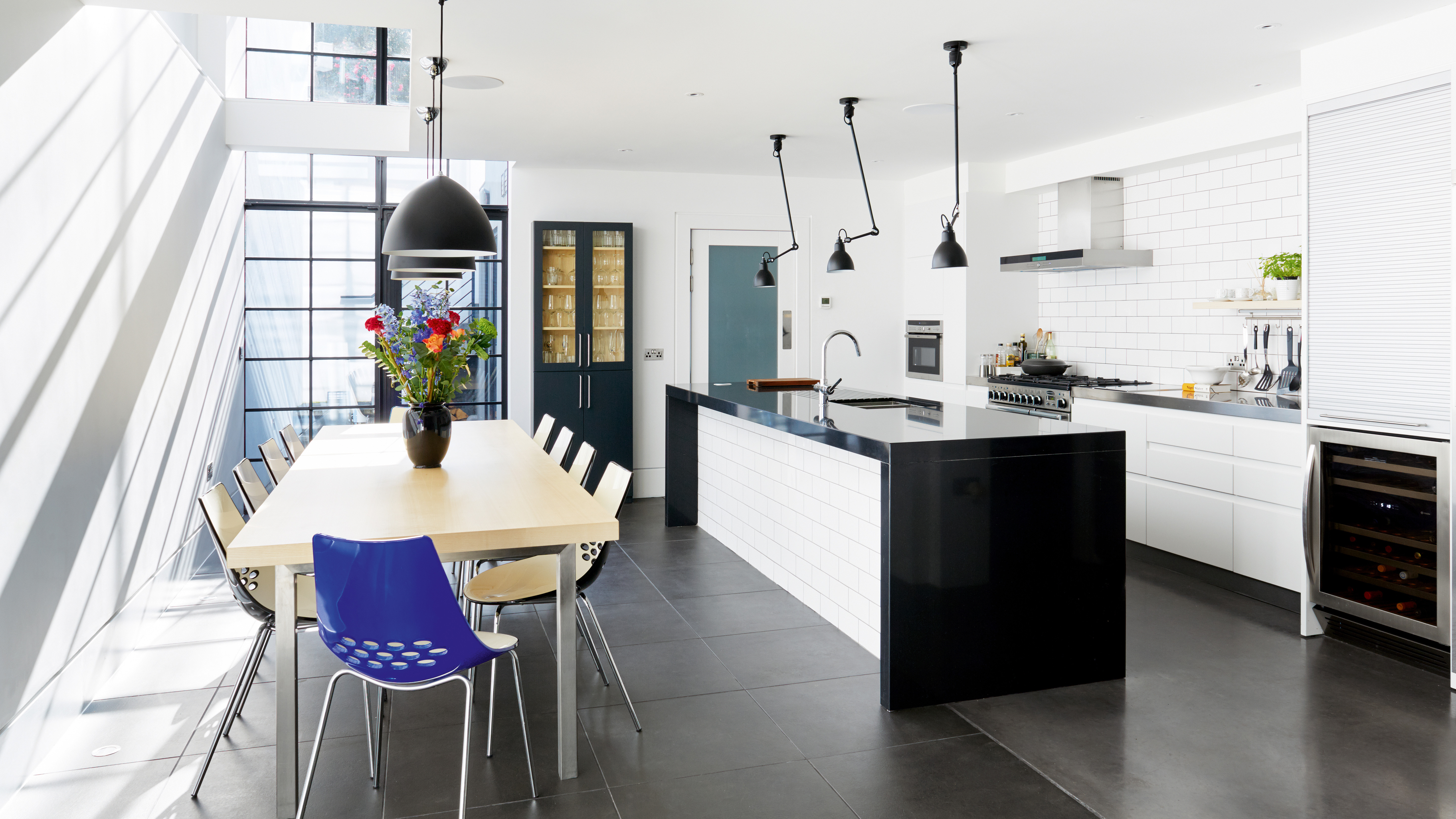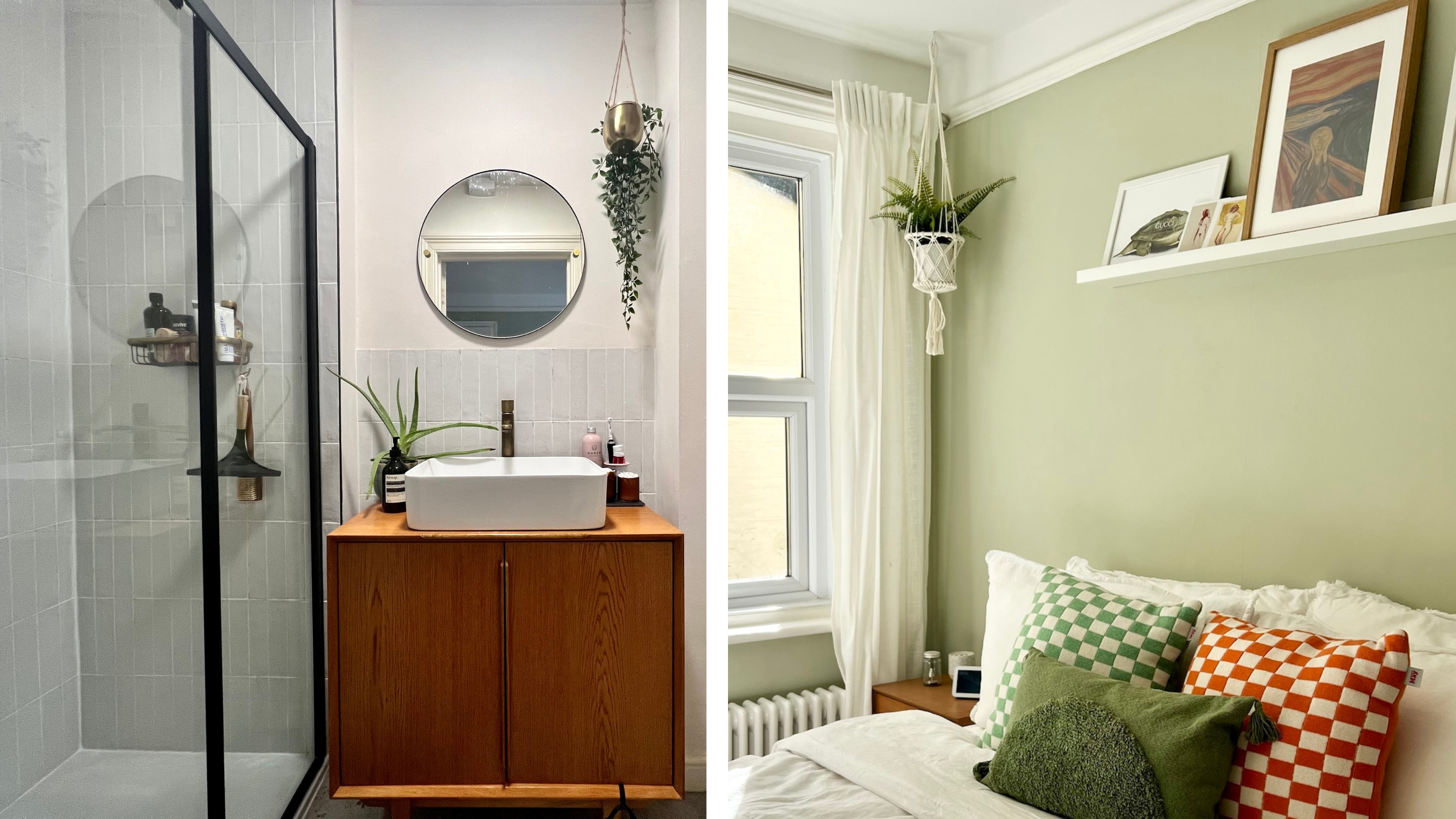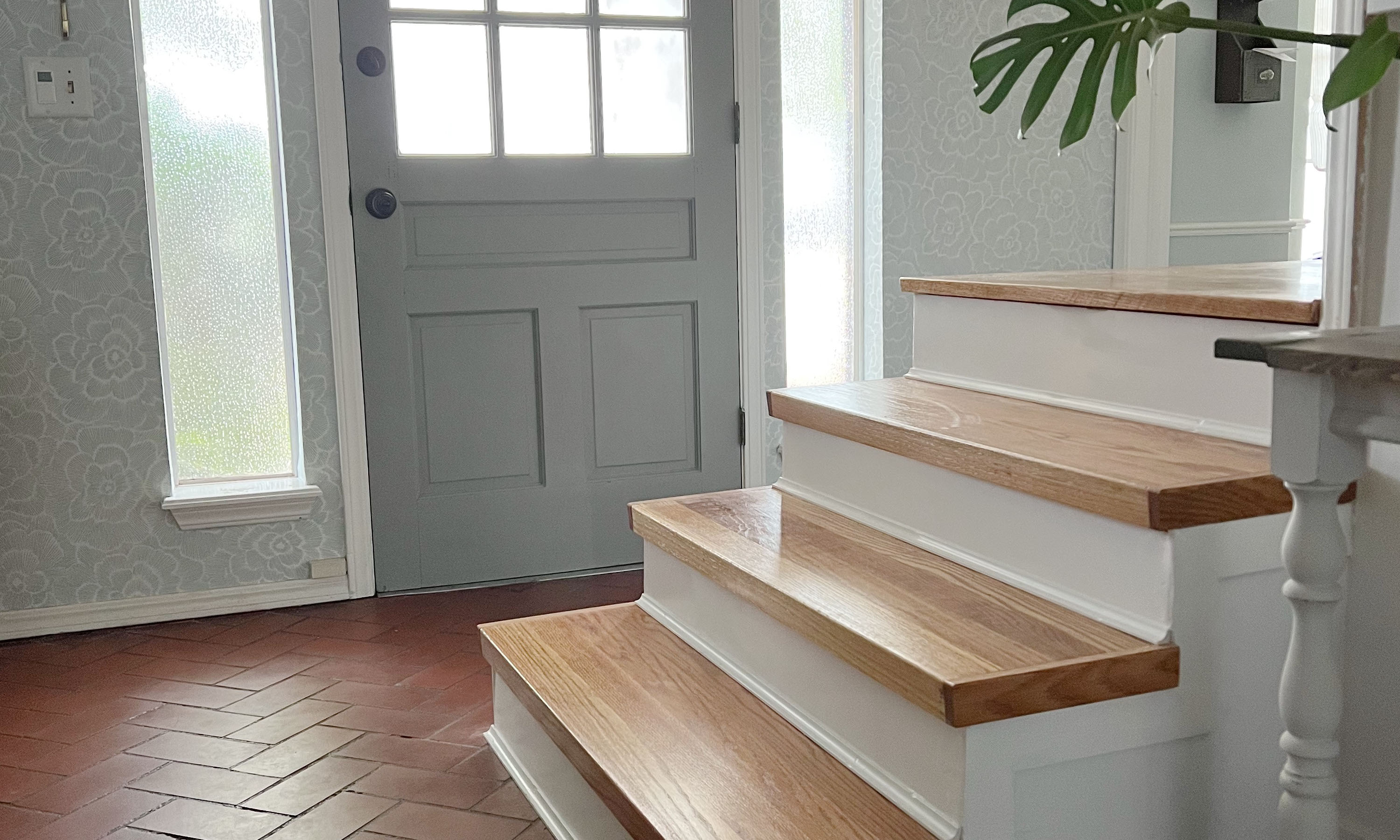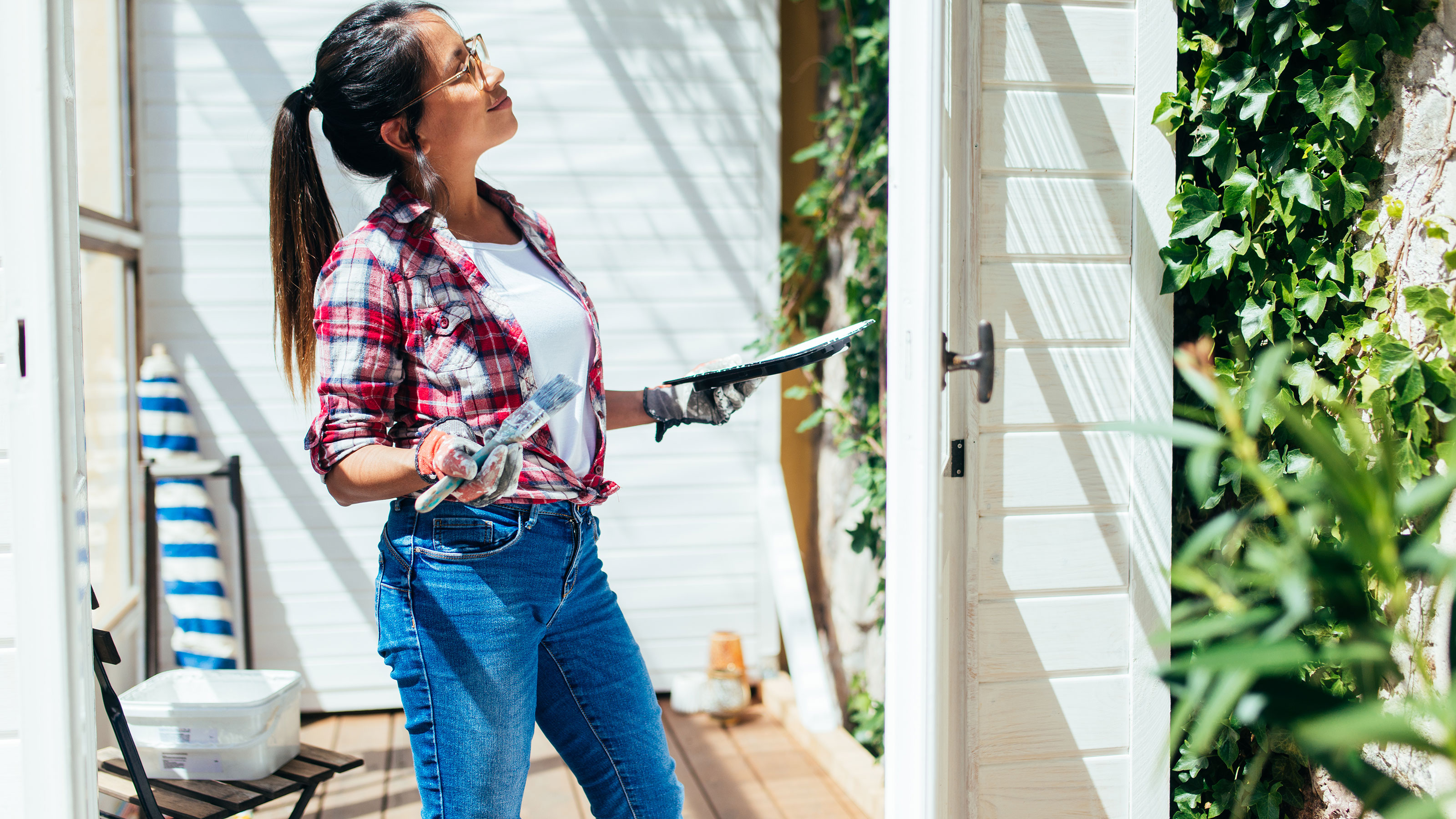

Stains, a distinctive damp smell, or mold and mildew can all be signs that you need to waterproof basement walls. The location of a basement means that it can need attention over time to remedy these problems, and keep the space dry and its contents in good condition.
Waterproofing can be a key element of realizing your favorite basement ideas but unfortunately, not everyone gets round to it until it's too late. If this sounds sorely familiar, you may be wondering about the best ways to waterproof basement walls and whether you can DIY or if you will be obliged to call in a pro.
If you have encountered problems, there are solutions you can implement yourself. However, experts highlight how vital it is to be aware of when professional assistance is a must.
Why should you waterproof basement walls?
Waterproofing is a factor that shouldn’t be neglected even when finishing a basement on a budget, but if you suspect you need to waterproof basement walls in an existing space, take urgent action.
‘Do not neglect basement issues,’ says Aaron Goucher of Olshan Foundation Repair. ‘While you may be told by a professional that nothing’s critical or urgent, it’s better to know that than assume incorrectly or neglect completely.
‘As with most things in life, fixing a small issue now is better than dealing with a major issue later. You have the convenience of budgeting, scheduling the repairs on your timeline, and finding the ideal company to assist you versus waking up to a flooded basement at the worst time.’
What are the signs that basement walls need waterproofing?
Waterproofing is the most expensive factor in basement remodeling costs, but if problems show up later down the line there are a number of ways you might spot this. ‘Important signs that indicate immediate waterproofing of your basement walls are: an unpleasant smell because of dampness; prominent stains on the basement walls or floor; difficulty opening and closing basement doors due to swelling; the appearance of mold or mildew on the walls; and visible cracks either on the floor or the basement walls,’ says David Clark, a contractor, home improvement expert and CEO at Basement Guides.
Be aware that the signs can be subtle. ‘We suggest that homeowners keep an eye open for any sweating or damping at various seams and cracks,’ says Aaron Goucher. ‘These will most likely be where the footers and basement floors meet, mortar joints, and window jambs. Obviously, any noticeable cracks in your walls or bowed/tilted walls are also huge indicators that moisture is not only a factor but already causing damages. While not your walls, if any of these signs begin occurring to your basement’s floor, it would be wise to investigate further or at least have someone out to consult.’
Can you waterproof basement walls yourself?
There are measures you can take to waterproof basement walls yourself. ‘For smaller or emerging wet basement issues, you do have a few helpful options, but as with any home repair or renovation, be mindful and realistic of your DIY capabilities,’ says Aaron Goucher.
‘It’s also important to note that these DIY repairs won't do much to protect your home against emerging hydrostatic pressure (water pressure that is stacking against your walls and increasing over time),’ he adds.
How do you waterproof the inside of a basement wall?
There are a number of measures you can take to waterproof the inside of a basement wall. However, you should always be safety conscious before carrying out work. A crack in the wall could cause the basement to flood in rainy conditions. ‘Never attempt this job with water in your basement,’ says Volodymyr Barabakh, co-founder and project director of building contractors Structural Beam. ‘Switch off the power supply and remove all flooding using a utility pump. For best safety practice, attempt this work on a dryer day whilst the rain has stopped.’
Hydraulic cement can be used for minor leaks. ‘Hydraulic cement should be used for any holes,’ says Zac Houghton, CEO of Loftera. ‘Water cannot enter cracks and holes in masonry when hydraulic cement is applied.’
‘Hydraulic cement is specifically designed for stopping or plugging minor water leaks, so it sets in about three to five minutes,’ says Aaron. ‘You’d just need latex gloves and a putty knife to apply the product evenly, but once it’s in your wall crack, it immediately starts expanding to fill those vulnerabilities.’
Once holes and cracks are filled, concrete walls can be sealed. ‘You can apply waterproof paint, which is a specifically designed sealant that’s applied to the walls,’ explains Aaron. ‘You’d apply this as you would normally paint your walls, using a roller and brush; you just want to make sure it’s thick. The goal is to fill all the pores and fine divots on your concrete wall so future seepage cannot penetrate the barrier.
‘However, you should only apply this waterproofing product if your basement walls are original, meaning they haven’t been painted before,’ he adds. ‘Some homeowners like the look of normal white paint on the walls, but it makes the waterproofing sealant ineffective.’
Be mindful that a basement window could be the cause of damp in the basement. ‘It is possible that water is seeping through the window in your basement,’ explains Stacey Kane from drainage and building materials suppliers EasyMerchant. ‘So, you should also check if there’s a need to add a bead of caulk around your basement window, maintain the window well, or install window well drains when waterproofing your basement walls.’
A sump pump may be necessary as well as measures to remedy drainage issues. ‘But most homeowners require a professional to address and install those,’ says Aaron.
When do you need to call in a pro to waterproof basement walls?
Damp basement walls can be caused by interior or exterior issues. If it’s the latter, DIY measures can be helpful but won’t resolve the problems. ‘An example of this could be the grade of your property and how it funnels water to your basement as opposed to away from your foundation,’ says Aaron Goucher. ‘There can also be a host of issues regarding drainage system issues.’
You may find installing gutters properly is the best solution. ‘Sometimes, you just need to unclog or fix improperly installed gutters to help re-direct water away from your basement,’ says Stacey Kane. ‘Be sure not to neglect this step in your waterproofing efforts.’
A pro can confirm the cause of the problem, so you can take the appropriate steps.
What is the best way to waterproof basement walls?
The best way to waterproof basement walls on a DIY basis is to fill cracks with hydraulic cement, and apply a sealant designed for waterproofing basement walls, plus use silicone masonry caulk around window jambs. General Electric GE5020 Concrete and Masonry Silicone II Caulk from Amazon is rain-ready in three hours and will do the trick.
‘More of the long-term solutions that address exterior issues or complex interior issues will require a professional who is licensed and trained to perform a variety of improvements,’ says Aaron Goucher. ‘These often include exterior shields, surface drains or water channels, sump pump basins and pumps, gravity discharges, and more.’
Join our newsletter
Get small space home decor ideas, celeb inspiration, DIY tips and more, straight to your inbox!

Sarah is a freelance journalist and editor writing for websites, national newspapers, and magazines. She’s spent most of her journalistic career specialising in homes – long enough to see fridges become smart, decorating fashions embrace both minimalism and maximalism, and interiors that blur the indoor/outdoor link become a must-have. She loves testing the latest home appliances, revealing the trends in furnishings and fittings for every room, and investigating the benefits, costs and practicalities of home improvement. It's no big surprise that she likes to put what she writes about into practice, and is a serial house revamper. For Realhomes.com, Sarah reviews coffee machines and vacuum cleaners, taking them through their paces at home to give us an honest, real life review and comparison of every model.
-
 My first apartment makeover: 5 renovation mistakes I learned the hard way, and how you can avoid them
My first apartment makeover: 5 renovation mistakes I learned the hard way, and how you can avoid themThese are 5 things to avoid in your apartment makeover. Trust me, I learned these the hard way during my first renovation project
By Luisa Rossi
-
 Share your small space glow up to win $150 in the Real Homes competition
Share your small space glow up to win $150 in the Real Homes competitionShow off your creativity and DIY skills to win $150 and for the chance to be featured exclusively in Real Homes magazine
By Camille Dubuis-Welch
-
 My DIY range hood and backsplash build gave my kitchen the perfect farmhouse finish
My DIY range hood and backsplash build gave my kitchen the perfect farmhouse finishI craved charm in my kitchen space and adding a custom range hood and shelving was the best move.
By Brooke Waite
-
 How to convert carpeted stairs to wood treads: a 5-step DIY
How to convert carpeted stairs to wood treads: a 5-step DIYConvert old worn-out carpeted stairs to wood treads DIY for a beautiful finish that will last for years to come. Plus, this stair riser project will cost a fraction of the price to pay a pro!
By Dori Turner
-
 AC not working? Here are 8 things to check ASAP according to industry experts
AC not working? Here are 8 things to check ASAP according to industry expertsYour AC may not be working because the filter is clogged or you've got a tripped circuit breaker. Whatever the issue, getting to the root of the problem will lead to quicker solutions
By Camille Dubuis-Welch
-
 3 DIYs you should NOT do in a heatwave
3 DIYs you should NOT do in a heatwaveYou shouldn't clean windows on a hot day, you just shouldn't
By Camille Dubuis-Welch
-
 HGTV home renovator shares the most essential home repair you can do
HGTV home renovator shares the most essential home repair you can doHGTV's hottest renovator Carmine Sabatella debunks why this basic home maintenance job should not be forgotten
By Camille Dubuis-Welch
-
 15 telltale signs you're dealing with a cowboy builder and how to avoid them
15 telltale signs you're dealing with a cowboy builder and how to avoid themA cowboy builder is easy to spot, when you know the telltale signs. Here's how to avoid one so you don't end up out of pocket with a poor or even unfinished home reno job
By Lucy Searle